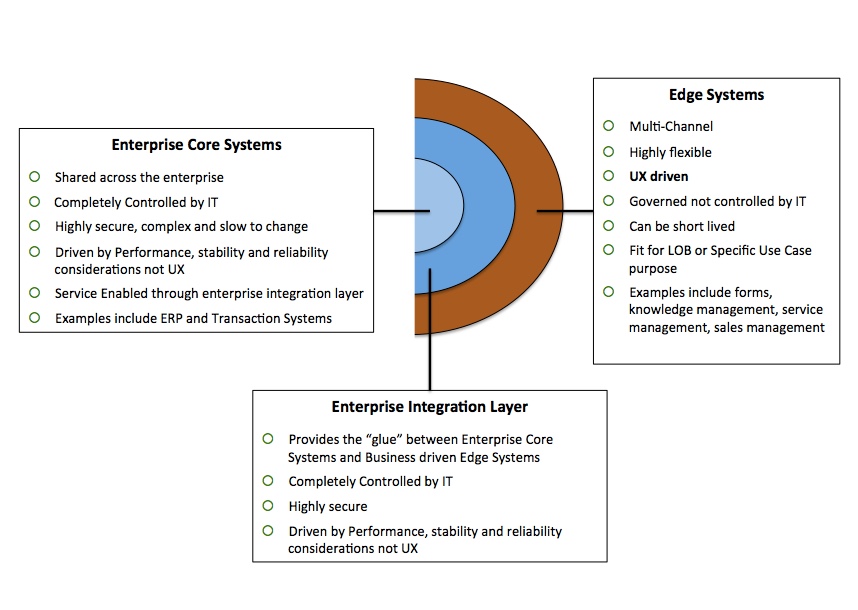
Get your FREE 30-day trial.
Start by selecting a product:
How do you manage the complexity of the enterprise whilst responding to the increasing demands of the business and the challenges of disruptors? That’s the question perplexing IT organisations worldwide. The answer is to think differently, relinquish some control and embrace two-speed IT.

Two-speed IT provides control of core enterprise systems whilst providing flexibility at the edge where it’s needed most.
Enterprise Architecture needs to be able to provide the flexibility business needs in the enterprise to compete with the increasing volume of new entrants that are winning the hearts, minds and wallets of the consumer. Whilst it’s unrealistic to expect a large enterprise to suddenly begin to behave like a start-up, it is possible to adopt the customer-first and customer experience focused behaviours of the challengers.
Some enterprises have adopted a “one size for the enterprise” philosophy (having single technology solutions for each functional area) and at first glance this has its merits. It shortens the list of vendors IT has to deal with, and appears on the surface to reduce complexity. Invariably though, there are missed requirements or new use cases that don’t fit neatly. Now we’re faced with a conundrum; do I insist on the continued use of the chosen platform even though it doesn’t fully support all of the needs of the business? Do I buy or build a new platform? Or, do I allow some flexibility in the enterprise? The flexibility answer is where two-speed IT comes in.
Two-speed IT allows IT to focus on and control core enterprise shared systems (those systems that are truly core to business operations and are truly shared across the enterprise) whilst governing the requirements for edge systems (line of business or even specific use case based systems).
Core systems are those big, complex, highly transactional and expensive systems that are the backbone of any enterprise: the Enterprise Resource Planning systems, core banking systems, etc. These systems, by design, aren’t focused on the user experience (UX), flexibility, mobility and being multi-channel.
Edge systems are highly UX focused and maybe both internal and external customer facing. (Edge systems are the systems the modern network architect uses to provide layered security boundaries around these core business systems.) These are the systems that are mobile, provide competitive advantage, allow change and experimentation and ensure highly productive, engaged and satisfied employees.
By their nature, these two types of systems are different, and should be different: they have different life cycles, usage models and fundamentally different goals.
If the enterprise is to remain competitive then it’s at the edge where flexibility is needed. Two-speed IT allows greater control of edge systems by the business whilst providing much needed IT guidance or governance. This might be through a dedicated team of IT professionals working in the business or through policies that the business adhere to when selecting, customising or even building new solutions.
The key in two-speed IT, is governance not control and to ensure governance is contextual to business. Provide a framework for edge systems to operate within that sets out standards and provides for interoperability. Even short lived or experimental systems should conform to well considered standards for security, UX, integration, performance, etc.
Providing business the latitude at the edge to keep them competitive, productive and happy whilst ensuring standards are maintained is a win-win for the business, IT and the customer.
If you've been thinking of going mobile for a while, see how the Salesforce1 Platform helps you build apps faster than ever with the Lightning App Builder. Easily build apps without writing a single line of code.